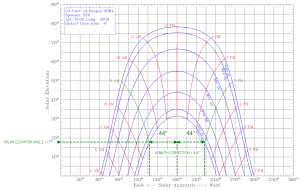At the end of May the winner of Eurovision 2004 Ruslana Lyzhichko celebrated her birthday. On this day, she invited a group of journalists to share the characteristics of their homes.
 Not far from the capital of Ukraine Ruslana lives with her husband in an ecologically clean house. The singer said that her home is energetically active. According to Ruslana, the house is entirely provided with green energy thanks to solar and wind installations.
Not far from the capital of Ukraine Ruslana lives with her husband in an ecologically clean house. The singer said that her home is energetically active. According to Ruslana, the house is entirely provided with green energy thanks to solar and wind installations.
Throughout her career, Ruslana supported a return to the roots and respect for the traditions of the Ukrainian people. The singer is an activist, supporting a careful attitude to nature and a healthy lifestyle in general. Ruslana believes that full-fledged life full of bright colors is possible only in harmony with nature.
The singer’s house is struck by its size and appearance. With the journalists, Ruslan shared the idea that she lives in the house of the future. Energy-efficient housing includes a rehearsal studio, a winter garden, an underground swimming pool and a number of living rooms.
It is interesting that Ruslana worked with her husband over the project of the house. Their dwelling is a completely snow-white house, next to which a garden is broken, curly bushes from boxwood are planted in the form of ancient runes.
Ruslana also told reporters that she and her husband absolutely do not pay for utilities. The thing is, solar panels are installed on the roof of the house, which generates electricity for power supply of housing. The energy is sufficient, despite the fact that the house itself has impressive dimensions, and in the rehearsal studio a fairly powerful apparatus is installed, which is used almost daily. In addition, a number of solar collectors are located on the roof of the building, which serve to heat and heat water in the building. Ruslana also reported that 10 wind generators help generate electricity for her ecological home.
 Ruslana Lyzhichko urges Ukrainians to follow her example by virtue of opportunities, because you can always find options how to reduce the harmful impact on nature. It is not necessary to develop a project of a large energy-efficient house, you can simply insulate the existing housing and thereby significantly reduce energy consumption.
Ruslana Lyzhichko urges Ukrainians to follow her example by virtue of opportunities, because you can always find options how to reduce the harmful impact on nature. It is not necessary to develop a project of a large energy-efficient house, you can simply insulate the existing housing and thereby significantly reduce energy consumption.
An example of the winner of Eurovision 2004 can be followed by everyone who wishes. We already wrote about the fact that Oschadbank issues favorable loans for the purchase of domestic solar stations. In addition to saving on paying for electricity, the owner of SES will also receive tangible profits for at least 20 years.















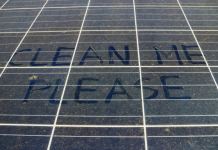

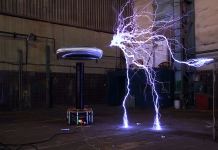



 There is this technology and one big enough disadvantage – the price. The fact is that in terms of the introduction of solar energy and on land, the stumbling block is precisely the cost of the project. At this stage, representatives of Eco Marine are working to reduce the cost of “solar sails.”
There is this technology and one big enough disadvantage – the price. The fact is that in terms of the introduction of solar energy and on land, the stumbling block is precisely the cost of the project. At this stage, representatives of Eco Marine are working to reduce the cost of “solar sails.”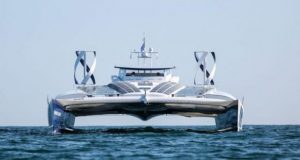 Instead of fuel, the ship uses hydrogen. They receive such “fuel” on land thanks to a special electrolysis unit. The plant is able to evaporate salt from sea water, and then divide the resulting liquid into O2 and hydrogen.
Instead of fuel, the ship uses hydrogen. They receive such “fuel” on land thanks to a special electrolysis unit. The plant is able to evaporate salt from sea water, and then divide the resulting liquid into O2 and hydrogen.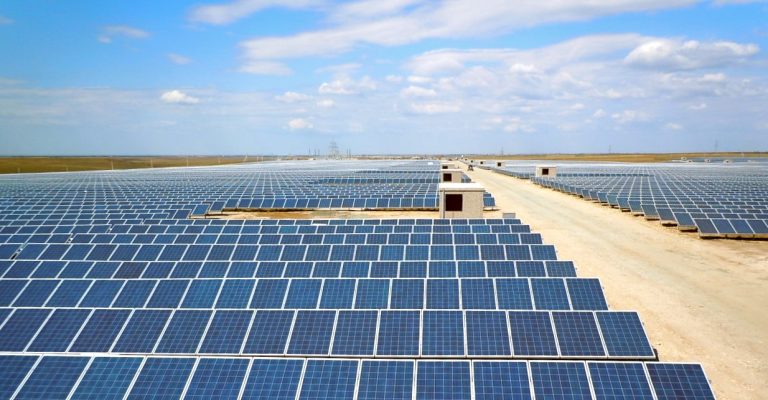
 According to information provided by the Ministry of Regional Construction, an agreement has already been signed regarding the construction of a new facility. The parties to the agreement were the company “Riko d.o.o.” headed by Janes Shkrabets and the communal enterprise “Center for Investments”, the head of which is the city of Zhitomir measures Sukhomlin SI
According to information provided by the Ministry of Regional Construction, an agreement has already been signed regarding the construction of a new facility. The parties to the agreement were the company “Riko d.o.o.” headed by Janes Shkrabets and the communal enterprise “Center for Investments”, the head of which is the city of Zhitomir measures Sukhomlin SI The deal on SES in Zhytomyr was carried out through the ProZorro system. Under the terms of cooperation, it is stipulated that the company that won the tender is required to provide part of the technical devices from its own funds. As an additional option, provision of irrevocable assistance (equipment supply) by third parties is considered.
The deal on SES in Zhytomyr was carried out through the ProZorro system. Under the terms of cooperation, it is stipulated that the company that won the tender is required to provide part of the technical devices from its own funds. As an additional option, provision of irrevocable assistance (equipment supply) by third parties is considered.
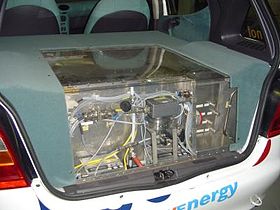 The technology allows to provide high-grade movement of the car thanks to hydrogen and oxygen. As a waste, water and thermal energy are produced, that is, there is no harm to the environment.
The technology allows to provide high-grade movement of the car thanks to hydrogen and oxygen. As a waste, water and thermal energy are produced, that is, there is no harm to the environment. It stops the development of technology incredibly high price of the project. This process is aggravated by the lack of efficient technologies for transferring energy from space, which excludes large losses.
It stops the development of technology incredibly high price of the project. This process is aggravated by the lack of efficient technologies for transferring energy from space, which excludes large losses.
 A group of scientists from Harvard University tried to approach the issue of introducing innovations in energy conservation more responsibly in terms of protecting nature. The inventors proposed a new type of organic batteries, which are not inferior to traditional batteries in efficiency.
A group of scientists from Harvard University tried to approach the issue of introducing innovations in energy conservation more responsibly in terms of protecting nature. The inventors proposed a new type of organic batteries, which are not inferior to traditional batteries in efficiency. Scientists claim that the battery using an innovative molecule has loss rates of 0.001 percent during one charging cycle. During one day of work, the battery cannot lose more than 0.01 percent. The molecule “Methuselah ” in the battery is placed in a weak solution of alkali.
Scientists claim that the battery using an innovative molecule has loss rates of 0.001 percent during one charging cycle. During one day of work, the battery cannot lose more than 0.01 percent. The molecule “Methuselah ” in the battery is placed in a weak solution of alkali.
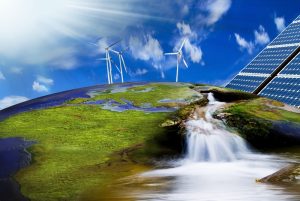 The data from the analysis of the world energy market confirm that RES in 2016 gave record growth rates of consumption. The percentage of energy derived from fossil fuels is steadily falling from year to year. This process on a global scale is very slow, but the dynamics are visible.
The data from the analysis of the world energy market confirm that RES in 2016 gave record growth rates of consumption. The percentage of energy derived from fossil fuels is steadily falling from year to year. This process on a global scale is very slow, but the dynamics are visible.
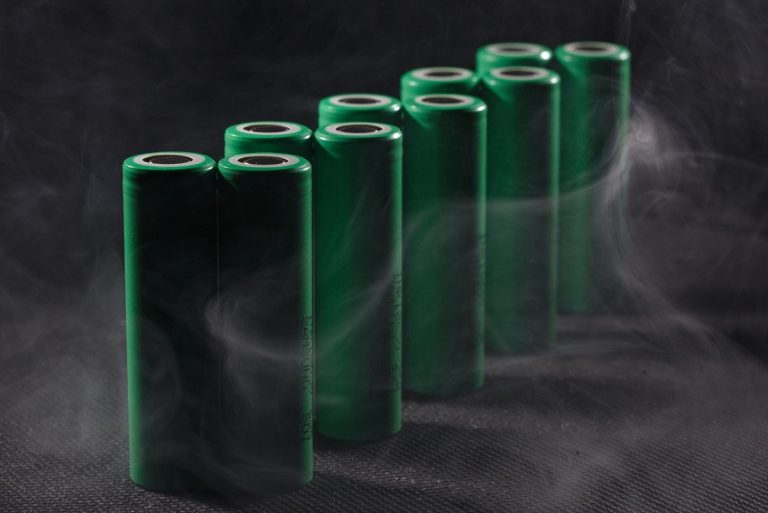
 The habitual battery in its composition has an anode and a cathode located at different edges of the device. Between these components is an insulator. The group of inventors was able to create a fundamentally new battery in which all components form a special spiral. The invention belongs to the staff of Cornell University. Creators of innovation claim that, thanks to the spiral structure of their invention inside, the battery will be able to charge in a couple of seconds.
The habitual battery in its composition has an anode and a cathode located at different edges of the device. Between these components is an insulator. The group of inventors was able to create a fundamentally new battery in which all components form a special spiral. The invention belongs to the staff of Cornell University. Creators of innovation claim that, thanks to the spiral structure of their invention inside, the battery will be able to charge in a couple of seconds. The pores in the structure of the structure have all the conditions for the conservation and transportation of the charge. Inventors claim that inherently the battery connects thousands of nanobatars in one energy store. The spiral distribution of pores increases the density of the energy flow by several times. The architecture of traditional batteries does not provide such opportunities. In practice, such a structure means that the battery can be charge in a couple of seconds.
The pores in the structure of the structure have all the conditions for the conservation and transportation of the charge. Inventors claim that inherently the battery connects thousands of nanobatars in one energy store. The spiral distribution of pores increases the density of the energy flow by several times. The architecture of traditional batteries does not provide such opportunities. In practice, such a structure means that the battery can be charge in a couple of seconds.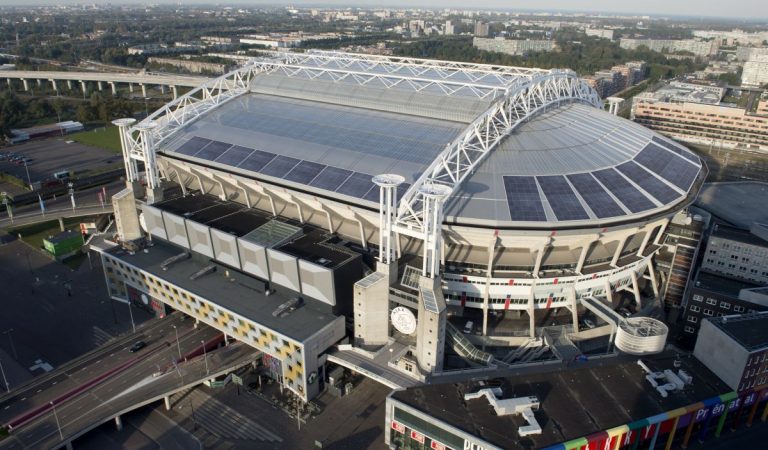
 Starting in 2013, the Dutch managed to install solar panels in five major stadiums. It should be note that the generated energy is enough to provide electricity to 1375 households. Such innovations are carriy out within the framework of the government program to reduce the dependence of Holland on imported raw materials.
Starting in 2013, the Dutch managed to install solar panels in five major stadiums. It should be note that the generated energy is enough to provide electricity to 1375 households. Such innovations are carriy out within the framework of the government program to reduce the dependence of Holland on imported raw materials. When the project was completed and ready for work, it became the largest station for generating solar energy on a city scale. In addition, this despite the fact that the roof of a single stand was reserved for the installation of panels. The choice fell precisely on this podium not just, because there are the most optimal conditions for the maximum productivity of the modules.
When the project was completed and ready for work, it became the largest station for generating solar energy on a city scale. In addition, this despite the fact that the roof of a single stand was reserved for the installation of panels. The choice fell precisely on this podium not just, because there are the most optimal conditions for the maximum productivity of the modules.
 National Renewable Energy Laboratory staff recently conducted a series of studies of solar panels. Their work was devoted specifically to “photovoltaic degradation.” For the research work, 2 thousand SES was take. The results of the studies showed that the average annual loss of panel efficiency is 0.5 percent. By simple deductions, it can be calculate that after 25 years of operation under positive conditions, the solar panel can show efficiency in the region of 88 percent compared to the initial indicators.
National Renewable Energy Laboratory staff recently conducted a series of studies of solar panels. Their work was devoted specifically to “photovoltaic degradation.” For the research work, 2 thousand SES was take. The results of the studies showed that the average annual loss of panel efficiency is 0.5 percent. By simple deductions, it can be calculate that after 25 years of operation under positive conditions, the solar panel can show efficiency in the region of 88 percent compared to the initial indicators. In addition to solar panels, the home SES includes an inverter. In addition, if the modules can exceed the expected lifespan, then this device behaves a little differently. The inverter is a device that converts a direct electric current into an alternating current and in this form delivers it to the network. If the solar panels lose their efficiency gradually, then the inverter is abruptly. At one point, it just goes out of order. Most often-central inverters overtake such a fate.
In addition to solar panels, the home SES includes an inverter. In addition, if the modules can exceed the expected lifespan, then this device behaves a little differently. The inverter is a device that converts a direct electric current into an alternating current and in this form delivers it to the network. If the solar panels lose their efficiency gradually, then the inverter is abruptly. At one point, it just goes out of order. Most often-central inverters overtake such a fate.

 In this instance, a windowpane was chosen from 9 am to 3 pm during the season solstice as the littlest fruitful time. You buoy select a fewer uncertain example to move resolutions to your issues almost the abilities. This specific instance was determined, as any utilities need a panefrom 9 am to 3 pm, when they propose rebates representing PV organizations owned close to the guest.
In this instance, a windowpane was chosen from 9 am to 3 pm during the season solstice as the littlest fruitful time. You buoy select a fewer uncertain example to move resolutions to your issues almost the abilities. This specific instance was determined, as any utilities need a panefrom 9 am to 3 pm, when they propose rebates representing PV organizations owned close to the guest.